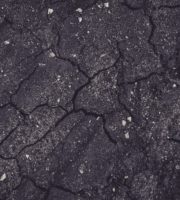Trees are essential for the environment but are also susceptible to damage caused by natural disasters, such as lightning strikes. Lightning can cause significant harm to trees, and it is essential to be aware of the warning signs that a tree has been struck by lightning to prevent potential hazards.
1. Bark Damage
Lightning can strip off the bark of a tree or cause deep cracks and splits in the bark. These cracks and splits can be easily visible, and if you notice any bark damage, it is essential to inspect the tree carefully for other signs of damage. The damaged bark makes the tree more vulnerable to diseases and pests that can further damage the tree’s health.
2. Split or Broken Branches
When lightning strikes a tree, it can cause branches to split or break, particularly at the point where they meet the trunk. This damage can cause the branch to hang precariously from the tree, creating a potential hazard. If you notice any broken or split branches, it is important to have the tree inspected by an arborist. The arborist can remove the damaged branches to prevent them from falling and causing harm.
3. Burn Marks
Burn marks are one of the most visible signs that a tree has been struck by lightning. These marks can be dark and discolored and may appear as strips or patches. If you notice any burn marks on a tree, it is important to have it inspected as soon as possible. Burn marks can weaken the tree’s structure, making it more vulnerable to pests and diseases.
4. Leaning or Tilting
Lightning strikes can cause a tree to become unstable and lean or tilt. This can be dangerous, especially if the tree is close to a building, power lines, or other structures. If you notice a tree leaning or tilting, it is important to have it inspected by an arborist immediately. The arborist can evaluate the tree’s health and determine the best action to prevent it from falling.
5. Dead Branches or Leaves
Lightning can cause significant damage to a tree’s leaves and branches, causing them to wilt and die. If you notice any dead branches or leaves on a tree, it may be a sign that it has been struck by lightning. This damage can weaken the tree and make it more vulnerable to further damage. The arborist can remove the damaged branches to prevent them from falling and causing harm.
6. Fungal Growth
Lightning strikes can make a tree more susceptible to fungal growth. Fungal growth can cause decay and weaken the tree’s structure, making it more likely to fall or break. If you notice any fungal growth on a tree, it is important to have it inspected by an arborist. The arborist can evaluate the extent of the damage and determine the best course of action to prevent further harm.
Lightning strikes can cause significant damage to trees, and it is important to be aware of the warning signs of lightning damage to prevent potential hazards. Bark damage, split or broken branches, burn marks, leaning or tilting, dead branches or leaves, and fungal growth are all signs that a tree may have been struck by lightning. If you notice any of these signs, having the tree inspected by an arborist is crucial. Prompt inspection and treatment can help prevent further damage and ensure the safety of people and property in the vicinity.







